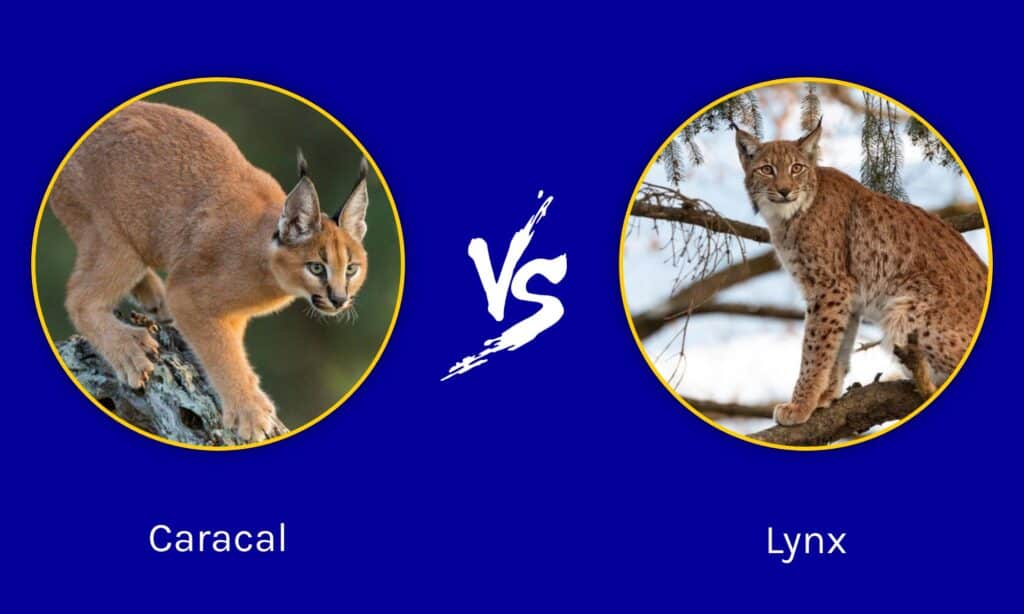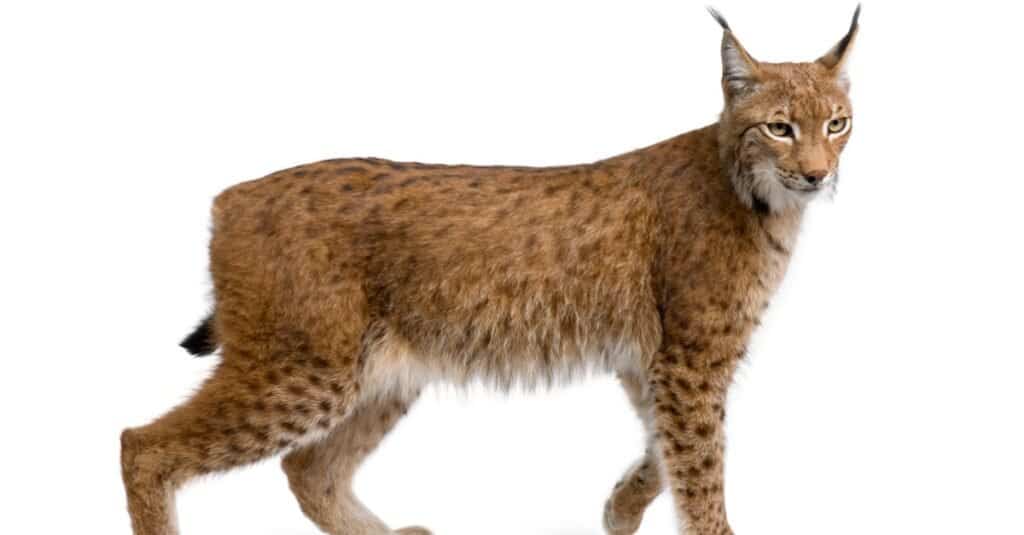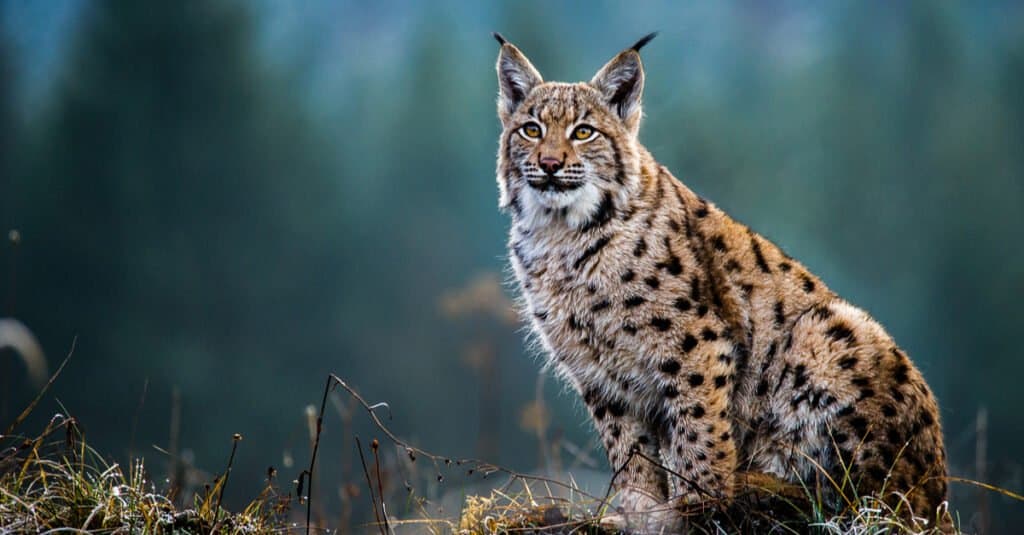Caracal vs Lynx: What Are 8 Key Differences?
@media (min-width: 481px) {
.mobile-top-content {
display: none;
}
}
#mobileTopContentCTACarouselControls { overflow: hidden; text-overflow: ellipsis; white-space: nowrap; }
.mobile-top-content .more { color: #fff; }
.mobile-top-content a { color: #fff; text-decoration: underline; }
.mobile-top-content a:hover { color: #fff; text-decoration: underline; }
@media (max-width: 480px) {
.mobile-top-content {
background-color: #06a10b;
color: #fff;
text-align: center;
/*height: 60px;
padding-top:5px;*/
font-size:80%;
/* display: block; */
margin: 0px -30px;
}
}
The caracal is a species of cat native to portions of Africa and Asia. A lynx is any of several species of medium-sized wild cats that belong to the genus Felis or Lynx subgenera. These two varieties of cats are frequently mistaken, although they can be distinguished easily. In this post, we will outline eight key distinctions between the caracal and the lynx to help you tell them apart!
Caracal vs Lynx: A Comparison

A-Z-Animals.com
| Caracal | Lynx | |
|---|---|---|
| Size | 16–18 Inches Tall, 24–42 Inches long, 7.9–9.8-Inch Tail. | Iberian Lynx Females: 20 lbs. / 23-27 In. long Long. Eurasian Lynx: 40 To 66lb / 27 In. Long |
| Colors | Tawny Or Reddish Gold Coat White Chin, Throat, Underbelly, Black Tuft | Medium Brown – Gold White. White On Chests, Bellies, Insides Legs |
| Physical Features | Slender Yet Muscular Physique, Small Face, Big Teeth, Pointed Tufted Ears, Long Legs | Speckled / Blotched Coats, Tufted Ears, Hairy Soles, Broad Head, Long Legs, And Huge Paws |
| Danger | Will Attack If Threatened, Rarely Attack Humans; Extremely Deadly To Small Animals | Unfriendly / Extremely Dangerous; Usually Avoid Humans, May Attack If Threatened |
| Diet | Carnivorous: Birds, Rodents, Tiny Antelopes | Varies Depending On Habitat; Roe Deer, Red Deer, Birds, Rabbits, Hares, Rats, Foxes, Etc. |
| Lifespan | 12- 17yrs | 12 to 20 years |
| Habitats | Prefer Wooded Areas, Savannahs, And Scrub Woods | Wet, Boreal Woodlands With Cold, Snowy Winters |
| Habits | Solitary Except For Mating, Both Sexes Have Territorial Home Ranges | Solitary Animals, More Active At Night |
Key Differences Between Caracal vs Lynx
The key differences between a caracal and a lynx are size, color, physical features, danger, habitat, lifespan, and diet.
button.pulse {
transform: scale(1); animation: pulse 2s infinite;
box-shadow: 0 0 0 0 rgba(11, 247, 25, 1);
}
@keyframes pulse {
0% { transform: scale(0.90); box-shadow: 0 0 0 0 rgba(11, 247, 25, 0.5); }
60% { transform: scale(1); box-shadow: 0 0 0 15px rgba(11, 247, 25, 0); }
100% { transform: scale(0.90); box-shadow: 0 0 0 0 rgba(11, 247, 25, 0); }
}
Caracal vs Lynx: Size
The average female Iberian lynx weighs about 21 pounds. The Iberian lynx ranges in length from 23- 27 inches. The Eurasian lynx is the biggest, ranging 27 inches in length and weighing between 40 to 66 pounds.
The shoulder height of a caracal is 16–18 inches, and its length is 24–42 inches, with its 7.9–9.3-inch tail. An adult caracal can weigh between 20 – 40 pounds.
Caracal vs Lynx: Colors
Medium brown to goldish white is the range of the lynx’s body color. On their chests, bellies, and inner legs, all lynx species have white fur. Depending on the climate, the color, length, and size of lynxes’ hair, as well as their paws, will vary.
The caracal has a tawny or reddish-gold coat with a white chin, throat, and abdomen. The coat is flecked with brown and black, and forms a collar around the neck, a black tail tip, and ear tufts.
Caracal vs Lynx: Physical Features

iStock.com/GlobalP
The lynx is speckled and blotched, while the caracal is not. Lynx have big paws, tufts on their ears, and hairy soles. They also have long legs and paws.
The caracal is a short-tailed, long-legged cat with black tufts on its pointed ears. Medium-sized caracals have lengthy legs and a short tail. They appear muscular and have small heads. The Caracal’s huge, pointed, black-tufted ears resemble a crown.
Caracal vs Lynx: Danger
Given their size and the amount of food they require to survive every day, lynx seek and devour large species. Lynx aren’t sociable. Rather, they’re unfriendly and dangerous, making domestication difficult. All lynx will fight back violently when cornered; however, they typically avoid human interaction. The lynx’s padded, hairy claws let it sneak up on prey.
Caracals can attack if cornered and threatened, but this is extremely rare. These cats would sooner escape from a potential threat than fight. Caracals have been known to kill tiny dogs and cats. They can hurt youngsters severely. It is best to stay far away from either of these wild cats!
Caracal vs Lynx: Diet

iStock.com/StuPorts
Caracals are meat-eaters. They go after tiny antelope, birds, and rodents. Cats stalk their prey before pouncing, and caracals are no exception. Chicken is sometimes eaten by these cats in regions where people reside.
When roe deer is readily accessible, lynx species will eat it. However, the type of food it eats depends on where it lives. In addition to deer, it feeds on a variety of small mammals such as birds and rodents. Lynx are great hunters because of their keen senses of hearing and sight.
Caracal vs Lynx: Lifespan

Tomas Hulik ARTpoint/Shutterstock.com
The average life expectancy of a lynx, whether male or female, is 10–20 years. Caracals in the wild typically live 10 to 12 years. Although they can live for up to 17 years in captivity, they are nonetheless vulnerable to disease.
Caracal vs Lynx: Habitat
Caracals can be found all over Africa. Swampy deserts are not as appealing to them as forested environments, savannahs, or scrub forests. They are primarily found in the southern African highlands.
In the far northern forests of North America, Europe, and Asia, the lynx lives in solitude. The boreal forests of Alaska and Canada are home to large populations of lynx.
Caracal vs Lynx: Habits
Lynx are nocturnal hunters and rovers who like to spend most of their time in the woods at night. Actively stalking and pouncing on their prey, as well as waiting for them to come to them, is how lynxes go about their business.
Caracals spend most of their time alone, except for mating and raising kittens. Territorial behavior is evident in both males and females. Males share territory with multiple other males, whereas a female is the only “owner” of her own territory.
Wrapping Up Caracal vs Lynx

Even though they are both “wild” cats and have appearances that are similar, the caracal and the lynx are still two separate species. Although they have slightly different habitats and behaviors, they both consume food in similar ways. When you’re out in the wilderness, it’s possible that you won’t be able to discern the difference between the two. The caracal does not have any spots or blotches on its coat, in contrast to the lynx, which has these markings on its fur. This is one of the most prominent differences between the two.
More from A-Z Animals
.more-snake-card-image { max-height:140px !important; }
@media (min-width: 481px) {
.mobile-top-content {
display: none;
}
}
#mobileTopContentCTACarouselControls { overflow: hidden; text-overflow: ellipsis; white-space: nowrap; }
.mobile-top-content .more { color: #fff; }
.mobile-top-content a { color: #fff; text-decoration: underline; }
.mobile-top-content a:hover { color: #fff; text-decoration: underline; }
@media (max-width: 480px) {
.mobile-top-content {
background-color: #06a10b;
color: #fff;
text-align: center;
/*height: 60px;
padding-top:5px;*/
font-size:80%;
/* display: block; */
margin: 0px -30px;
}
}
The caracal is a species of cat native to portions of Africa and Asia. A lynx is any of several species of medium-sized wild cats that belong to the genus Felis or Lynx subgenera. These two varieties of cats are frequently mistaken, although they can be distinguished easily. In this post, we will outline eight key distinctions between the caracal and the lynx to help you tell them apart!
Caracal vs Lynx: A Comparison

A-Z-Animals.com
| Caracal | Lynx | |
|---|---|---|
| Size | 16–18 Inches Tall, 24–42 Inches long, 7.9–9.8-Inch Tail. | Iberian Lynx Females: 20 lbs. / 23-27 In. long Long. Eurasian Lynx: 40 To 66lb / 27 In. Long |
| Colors | Tawny Or Reddish Gold Coat White Chin, Throat, Underbelly, Black Tuft | Medium Brown – Gold White. White On Chests, Bellies, Insides Legs |
| Physical Features | Slender Yet Muscular Physique, Small Face, Big Teeth, Pointed Tufted Ears, Long Legs | Speckled / Blotched Coats, Tufted Ears, Hairy Soles, Broad Head, Long Legs, And Huge Paws |
| Danger | Will Attack If Threatened, Rarely Attack Humans; Extremely Deadly To Small Animals | Unfriendly / Extremely Dangerous; Usually Avoid Humans, May Attack If Threatened |
| Diet | Carnivorous: Birds, Rodents, Tiny Antelopes | Varies Depending On Habitat; Roe Deer, Red Deer, Birds, Rabbits, Hares, Rats, Foxes, Etc. |
| Lifespan | 12- 17yrs | 12 to 20 years |
| Habitats | Prefer Wooded Areas, Savannahs, And Scrub Woods | Wet, Boreal Woodlands With Cold, Snowy Winters |
| Habits | Solitary Except For Mating, Both Sexes Have Territorial Home Ranges | Solitary Animals, More Active At Night |
Key Differences Between Caracal vs Lynx
The key differences between a caracal and a lynx are size, color, physical features, danger, habitat, lifespan, and diet.
button.pulse {
transform: scale(1); animation: pulse 2s infinite;
box-shadow: 0 0 0 0 rgba(11, 247, 25, 1);
}
@keyframes pulse {
0% { transform: scale(0.90); box-shadow: 0 0 0 0 rgba(11, 247, 25, 0.5); }
60% { transform: scale(1); box-shadow: 0 0 0 15px rgba(11, 247, 25, 0); }
100% { transform: scale(0.90); box-shadow: 0 0 0 0 rgba(11, 247, 25, 0); }
}
Caracal vs Lynx: Size
The average female Iberian lynx weighs about 21 pounds. The Iberian lynx ranges in length from 23- 27 inches. The Eurasian lynx is the biggest, ranging 27 inches in length and weighing between 40 to 66 pounds.
The shoulder height of a caracal is 16–18 inches, and its length is 24–42 inches, with its 7.9–9.3-inch tail. An adult caracal can weigh between 20 – 40 pounds.
Caracal vs Lynx: Colors
Medium brown to goldish white is the range of the lynx’s body color. On their chests, bellies, and inner legs, all lynx species have white fur. Depending on the climate, the color, length, and size of lynxes’ hair, as well as their paws, will vary.
The caracal has a tawny or reddish-gold coat with a white chin, throat, and abdomen. The coat is flecked with brown and black, and forms a collar around the neck, a black tail tip, and ear tufts.
Caracal vs Lynx: Physical Features

iStock.com/GlobalP
The lynx is speckled and blotched, while the caracal is not. Lynx have big paws, tufts on their ears, and hairy soles. They also have long legs and paws.
The caracal is a short-tailed, long-legged cat with black tufts on its pointed ears. Medium-sized caracals have lengthy legs and a short tail. They appear muscular and have small heads. The Caracal’s huge, pointed, black-tufted ears resemble a crown.
Caracal vs Lynx: Danger
Given their size and the amount of food they require to survive every day, lynx seek and devour large species. Lynx aren’t sociable. Rather, they’re unfriendly and dangerous, making domestication difficult. All lynx will fight back violently when cornered; however, they typically avoid human interaction. The lynx’s padded, hairy claws let it sneak up on prey.
Caracals can attack if cornered and threatened, but this is extremely rare. These cats would sooner escape from a potential threat than fight. Caracals have been known to kill tiny dogs and cats. They can hurt youngsters severely. It is best to stay far away from either of these wild cats!
Caracal vs Lynx: Diet

iStock.com/StuPorts
Caracals are meat-eaters. They go after tiny antelope, birds, and rodents. Cats stalk their prey before pouncing, and caracals are no exception. Chicken is sometimes eaten by these cats in regions where people reside.
When roe deer is readily accessible, lynx species will eat it. However, the type of food it eats depends on where it lives. In addition to deer, it feeds on a variety of small mammals such as birds and rodents. Lynx are great hunters because of their keen senses of hearing and sight.
Caracal vs Lynx: Lifespan

Tomas Hulik ARTpoint/Shutterstock.com
The average life expectancy of a lynx, whether male or female, is 10–20 years. Caracals in the wild typically live 10 to 12 years. Although they can live for up to 17 years in captivity, they are nonetheless vulnerable to disease.
Caracal vs Lynx: Habitat
Caracals can be found all over Africa. Swampy deserts are not as appealing to them as forested environments, savannahs, or scrub forests. They are primarily found in the southern African highlands.
In the far northern forests of North America, Europe, and Asia, the lynx lives in solitude. The boreal forests of Alaska and Canada are home to large populations of lynx.
Caracal vs Lynx: Habits
Lynx are nocturnal hunters and rovers who like to spend most of their time in the woods at night. Actively stalking and pouncing on their prey, as well as waiting for them to come to them, is how lynxes go about their business.
Caracals spend most of their time alone, except for mating and raising kittens. Territorial behavior is evident in both males and females. Males share territory with multiple other males, whereas a female is the only “owner” of her own territory.
Wrapping Up Caracal vs Lynx

Even though they are both “wild” cats and have appearances that are similar, the caracal and the lynx are still two separate species. Although they have slightly different habitats and behaviors, they both consume food in similar ways. When you’re out in the wilderness, it’s possible that you won’t be able to discern the difference between the two. The caracal does not have any spots or blotches on its coat, in contrast to the lynx, which has these markings on its fur. This is one of the most prominent differences between the two.









